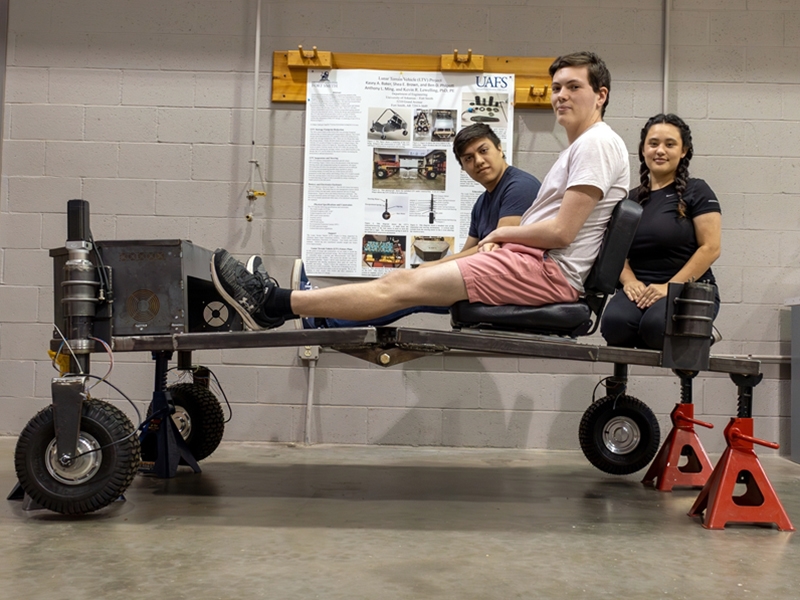
A group of students studying through a remote campus program offered by the U of A Department of Electrical Engineering and Computer Science is designing a lunar rover for NASA's upcoming mission to the moon. These University of Arkansas at Fort Smith students are working to develop the rover to assist astronauts during their lunar exploration.
The Fort Smith university offers bachelor's and associate degrees in electrical and mechanical engineering in collaboration with the U of A. UAFS faculty deliver the freshman and sophomore courses, while junior- and senior-level courses are taught by U of A faculty on the UAFS campus.
The lunar rover group started with an "RFI," or request for information, from NASA about two years ago, said Kevin Lewelling, the UAFS professor leading the project.
"You know, there's another trip back to the moon," Lewelling said. "Part of that mission is to put a rover on the moon for the astronauts to drive."
To meet NASA's specifications within budget constraints, the team has focused on reducing the rover's storage footprint.
"So, we came up with a design where the rover could fold at the midsection to reduce the storage footprint by 50 percent," Lewelling explained.
The students are diligently working on building the rover, completing key components such as the frame, suspension and seating.
UAFS student Dylan Jetton, one of the current team members, expressed his enthusiasm for the project, stating, "I've been mostly involved with the different motors and the control systems that go along with them. So far, it's mainly been code work, but hopefully within a week or two, I can start working on the wiring of the Lunar Terrain Vehicle and getting everything connected."
The project has given him the opportunity to work with new platforms, such as the Arduino software, which controls the motors. It's also allowing him to practice coding and to perform documentation for the project, which is a first for him.
The team is currently adding safety features and programming the rover's controls.
"We're building the roll cages this summer with some of the protection equipment on it," Lewelling said. "Also, we're programming the controls to drive the rover. It'll be driven with the joystick. It'll also have a touchscreen on it for you to use to make adjustments and so forth."
Over the past 18 months, a dedicated group of up to a dozen students has been involved in the rover's design and construction. The team has presented its progress at the Johnson Space Center and the Arkansas Space Grant Consortium. These presentations have not only showcased their work but also led to numerous internship and job opportunities for the students.
"This year, four of our students had intern positions with NASA, with one getting offered a full-time job," Lewelling said.
Former student Anthony Ming said the project offered him invaluable experience because it allowed him to use his prior aerospace knowledge from a 15-month internship at NASA's Johnson Space Center.
"It also taught me the nuances of leading a relatively inexperienced team," he said. "Very few students have aerospace experience starting out. Each member was connected only by a shared passion for the project and their eagerness to learn.
"For me, this project was one of the pinnacles of my educational journey, providing real-world aerospace leadership experience that was unparalleled," Ming said. "Seeing my fellow students share my excitement for space exploration is incredibly rewarding. Seeing them go on to accomplish these amazing things is even better, and that turned out to be the actual success of the project."
Looking ahead, the team aims to finalize the rover's construction and make it driveable. In the future, the team plans to address concerns about the rover's weight through a redesign phase.
Lewelling expressed optimism about future collaborations with other industry leaders.
The students' hands-on experience and interdisciplinary training have equipped them with valuable skills sought after by employers in the industry, Lewelling said.
Information about the electrical engineering and computer science department's remote campus at the University of Arkansas at Fort Smith is available at electrical-engineering.uark.edu/academics/undergraduate.
Topics
Contacts
Austin James Cook,
Electrical Engineering and Computer Science
479-575-7120, ac202@uark.edu
Jennifer P. Cook, director of communications
College of Engineering
479-575-5697, jpc022@uark.edu